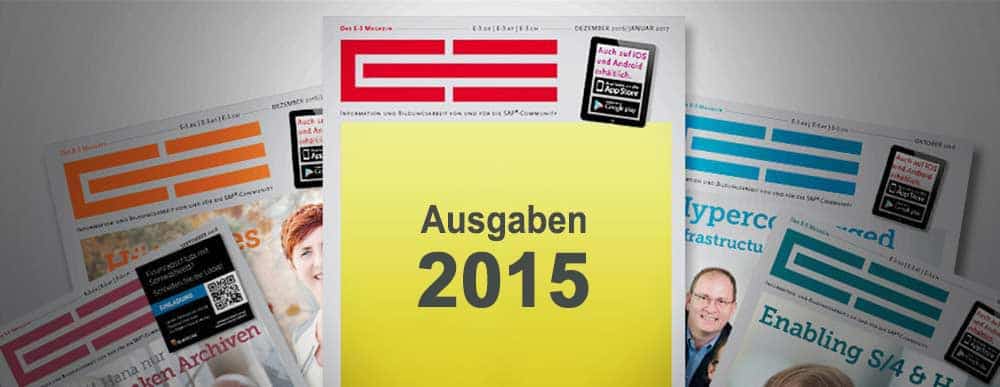Fiori App Development in the Hana Cloud Platform with Web IDE


Even for people who are open-minded about IT, it is difficult to distinguish trends from passing phenomena in today's digitalized world. Due to the limited time available for orientation, the decision to use a solution or product is increasingly based solely on a provider's market presence or brand.
This is no different in the business software sector. One vision chases the next, fired by modern marketing strategies to attract the attention of the masses, with the increase in market share always firmly in sight.
The life cycle and sustainability of implementations are becoming ever shorter. Whereas a few years ago it was important to pursue a long-term IT strategy for optimizing processes, today it is important to be "prepared for everything". Because everything changes, they say again and again.
Software manufacturers flirt with the finest marketing with the statement that they do not know what the future holds, but that they have solutions that will help to master it. It is not more processes, but technology again that will make the difference in future competitiveness.
But how do you recognize the right brand to deal with when it comes to ERP solutions? The easiest way to answer this question is for companies that use SAP, or perhaps not.
The multitude of innovations, the drive towards the cloud and the focus on mobile users as a seemingly last resort for the expansion of existing license models provide food for scepticism.
In order to make sustainable decisions, it is therefore important to understand what makes up the DNA of a company. Systems, applications and products at Datenverarbeitung GmbH - that's where it all began.
It is up to personal judgment whether the order of the terms indicates a priority. The fact is that SAP implementations in recent years have repeatedly had to surrender to SAP's technological affinity. Often with the unanswered question: "What will this do for my processes?"
In order to remain competitive and satisfy the hunger of a market economy, it is now common practice to manipulate or at least supplement genes in one's own DNA. The marketing gene plays a decisive role as a supplement.
It creates terms that are even intended to lend feelings to technological abbreviations. It is striking that the shorter the slogan, the greater the effect: "The Best running businesses run SAP" has become "run simple" in today's fast-paced world.
When it comes to neologisms such as NetWeaver or Hana, however, feelings do not always arise immediately. But what about Fiori? Fiori, "flowers" in Italian, is undoubtedly an apt choice for symbolizing a UI technology.
It replaces a defective gene and extends SAP's DNA in the long term. This was recognized by a company leader who is now focusing on users and their needs. It's good for SAP that this strategy not only has to do with the "marketing gene", but also with technology.
A flower is representative of something beautiful, something for the eye, beautiful to look at, such as a great user interface that inspires the user. From a marketing point of view, a direct hit. But everyone also knows that a flowering plant needs professional care to retain its positive aura. SAP is also aware of this and asks the community for help with maintenance.
So which brand innovations should not be passed by carelessly? These are precisely the ones that arise from existing DNA structures and help to counter an unstoppable trend. SAP's UI technology is finally one of them.
Mobile first
SAP is now ready for these challenges of a mobile world and provides a platform combined with a development environment. The Hana cloud platform with the Web IDE makes all previous approaches pale in comparison.
Feelings are allowed with the word Hana, but unnecessary, as it soon turns out. The technology does not come into contact with everything that says Hana on it. When developing mobile applications, you inevitably come up against the problem of different platforms with specific requirements.
One solution is to rely on a common standard that is available on all platforms. Outside the SAP world, the most common approach is to develop using the HTML5 standard.
SAP is now providing its own library for this purpose, SAP UI5. SAP UI5 is based on the HTML5 standard and the popular JavaScript library jQuery, allowing experienced web developers to draw on existing expertise.
SAP UI5 also offers a cross-platform, standardized user interface, which means that the applications do not differ in look and feel. Above all, the focus is on the development of mobile applications, so the display of UI elements is optimized for mobile devices.
It is also easy to integrate external libraries into a project and use third-party APIs, such as those from Google. SAP offers the Fiori client to do justice to the "mobile first" approach.
This provides a container in which various web applications can be made available. It is also possible to access the native capabilities of the end device via the Fiori client, for example access to hardware components such as the photo function for scanning barcodes.
Web IDE
The development of SAP UI5 applications is basically possible in any standard programming environment. However, SAP's browser-based IDE (Web IDE) in the cloud, in which the UI5 library is fully integrated and therefore designed for the development of UI5 applications, makes it quick and effective.
The Web IDE provides various templates for standard applications, such as OData integration and an uncomplicated way of displaying applications in different languages.
Working in the Web IDE also makes it possible to extend the web application with the option of creating a native application from it. Apache's Cordova serves as the basis for this, which also enables the integration of freely available and own Cordova extensions.
With the SAP Hybrid Application toolkit, a native application for Android/iOS can be created very conveniently from the Web IDE. The locally installed SDK is used for this, whereby Xcode, and therefore Mac OSX, is required to create an iOS application.
The step onto the web
All you need to get started with mobile application development is a Hana trial account. This is free of charge and offers all the relevant tools to get started.
In addition to an in-memory database, the Hana Cloud offers the option of connecting the on-premise SAP system via the SAP Cloud Connector, whereby an OData service is used for data exchange.
This means that the applications can easily consume data, for example from a CRM system, or transfer data to it. The service itself is created in the backend.
The locally installed Cloud Connector then establishes a tunnel connection to the SAP data center via the NetWeaver Gateway. The Hana Cloud Platform (HCP) serves as the runtime environment for the applications created. The role and user management of the Hana Cloud ensures security.
Fiori client and launchpad
An application created via the Web IDE becomes a Fiori app when used in the device-specific Fiori client. This can be recognized by the display as an application tile with the option of personalization.
The Fiori Launchpad handles the presentation and role-based control of access authorizations for the various applications. When using the Launchpad via the Hana cloud platform, the backend system only contains an OData service for reading and writing application data. The Fiori client is freely available via the app stores of Google, Microsoft or Apple.
The SAP UI5 library and therefore the look and feel of Fiori applications is being further developed by SAP. The separation of visualization from data management and the use of open standards ensures a sustainable strategy for future requirements in terms of user experience.
Many thanks for the flowers, SAP! They should be on every desktop.





